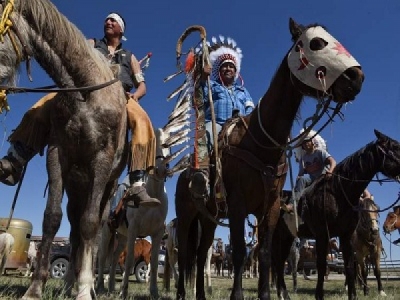
Posted on August 6, 2018
Native American tribes that tried to block the Dakota Access oil pipeline during a monthslong standoff with authorities in North Dakota more than a year ago are carrying on their fight in federal court, in what they contend is a symbol of their struggle for tribal sovereignty.
“People think Standing Rock has come and gone,” said Danielle Ta’Sheena Finn, a spokeswoman for the Standing Rock Sioux, referring to the sight of the protests. “But we will continue this fight until we are heard and the world knows what happened to us.”
The underground pipeline, which crosses 18 counties in Iowa. has been operational since June 2017, after President Donald Trump granted its permit over the objections of tribes and environmentalists fearful it would pollute a waterway sacred to the Standing Rock and Cheyenne River Sioux.
The Standing Rock and Cheyenne Sioux sued the Army Corps of Engineers soon after Trump ordered it to approve the pipeline, arguing that the tribes had not been properly consulted.
The Corps is involved with military construction projects around the world and also advises civil engineering activities, such as dredging America’s waterways and cleaning up hazardous or toxic sites.
U.S. District Judge James Boasberg in Washington, D.C., is weighing whether the Corps adequately considered effects on the tribes before approving the pipeline, which is owned by Energy Transfer Partners of Texas. He is expected to rule by Aug. 10.
The Corps did not respond to a request for comment, but has previously said it worked diligently to meet obligations to tribes.
Source: The Gazette





